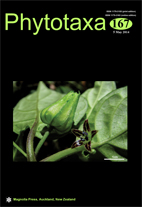Abstract
Species from Utricularia sect. Foliosa and sect. Psyllosperma were studied based on seed characteristics. Our goals were to search for informative characters useful to species delimitations, especially for very polymorphic species such as U. amethystina, and also to provide an identification key and discussion about the delimitation of both sections. The qualitative characters of seeds were more useful than quantitative ones for taxonomic purposes but, as presented here in an identification key, it was impossible to distinguish three species from each other (Utricularia huntii, U. praelonga and U. tridentata). Our results are not enough for deep speculations about the delimitation of both sections. However, they do not agree with Taylor’s system, because it was impossible to separate the studied species in two clearly different groups. However, the variability found in the seed characters was evaluated in this work and we also briefly discussed the ecologic implications of some seed traits.

